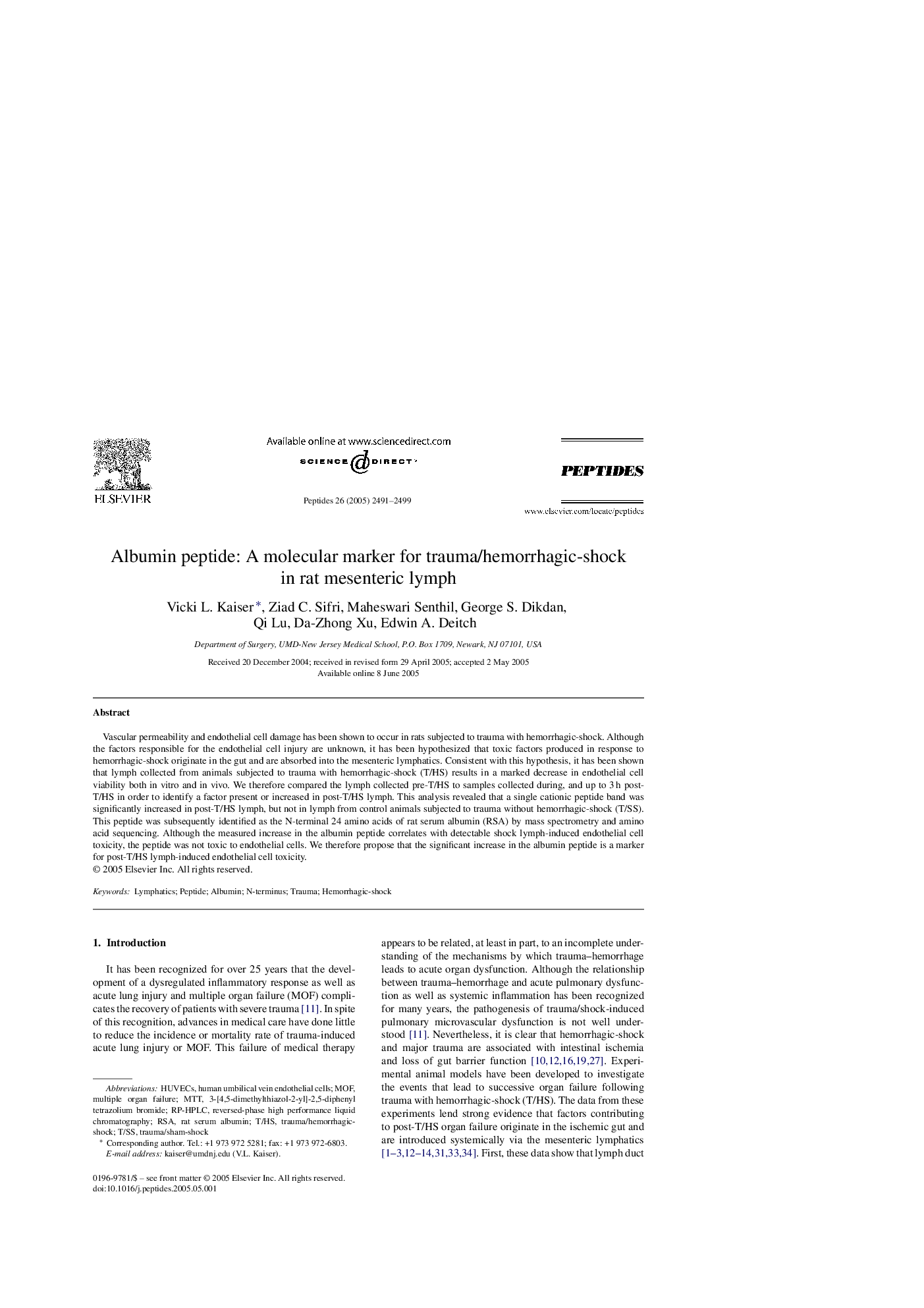| Article ID | Journal | Published Year | Pages | File Type |
|---|---|---|---|---|
| 2008695 | Peptides | 2005 | 9 Pages |
Vascular permeability and endothelial cell damage has been shown to occur in rats subjected to trauma with hemorrhagic-shock. Although the factors responsible for the endothelial cell injury are unknown, it has been hypothesized that toxic factors produced in response to hemorrhagic-shock originate in the gut and are absorbed into the mesenteric lymphatics. Consistent with this hypothesis, it has been shown that lymph collected from animals subjected to trauma with hemorrhagic-shock (T/HS) results in a marked decrease in endothelial cell viability both in vitro and in vivo. We therefore compared the lymph collected pre-T/HS to samples collected during, and up to 3 h post-T/HS in order to identify a factor present or increased in post-T/HS lymph. This analysis revealed that a single cationic peptide band was significantly increased in post-T/HS lymph, but not in lymph from control animals subjected to trauma without hemorrhagic-shock (T/SS). This peptide was subsequently identified as the N-terminal 24 amino acids of rat serum albumin (RSA) by mass spectrometry and amino acid sequencing. Although the measured increase in the albumin peptide correlates with detectable shock lymph-induced endothelial cell toxicity, the peptide was not toxic to endothelial cells. We therefore propose that the significant increase in the albumin peptide is a marker for post-T/HS lymph-induced endothelial cell toxicity.
